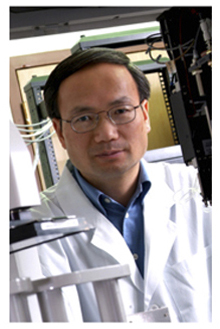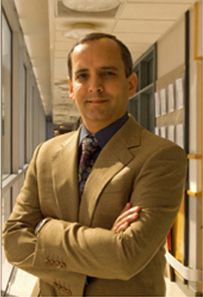On the research front

Speeding drug discovery: Many undiscovered drugs that could carry potential significant benefits for cancer patients are of little interest to the pharmaceutical industry.
The search for them is not worth the amount of money it would take to find and then develop them. Enter the National Cancer Institute’s Chemical Biology Consortium (CBC).
Emory is part of that consortium, which is focusing on accelerating the discovery and development of new targeted therapies for cancer. The consortium will bring together the skills of hundreds of chemical biologists, oncologists, and chemists to molecular oncology. The goal is to bridge the gap between basic science and clinical research supported by the NCI.
Recent advances in understanding the molecular basis of cancer have opened doors for new avenues for innovative drug discovery, says pharmacologist Haian Fu (above), director of the Emory CBC. The consortium will enable its members from 11 centers nationwide to pursue investigation of new signaling pathways and promising but difficult targets for potential cancer drugs.
What makes the effort particularly promising is its emphasis on team science. At Emory, the team includes investigators from the Winship Cancer Institute and researchers from throughout campus, from biologists and researchers who screen compounds to bioinformatics experts and medicinal chemists. Emory’s effort builds on its participation in the National Molecular Libraries Screening Center Network, which uses high-tech screening methods of large libraries of small molecular compounds (up to 200,000 or more) to identify promising molecular research probes. For more information on the new center, call 404-712-2654.
|
||||



